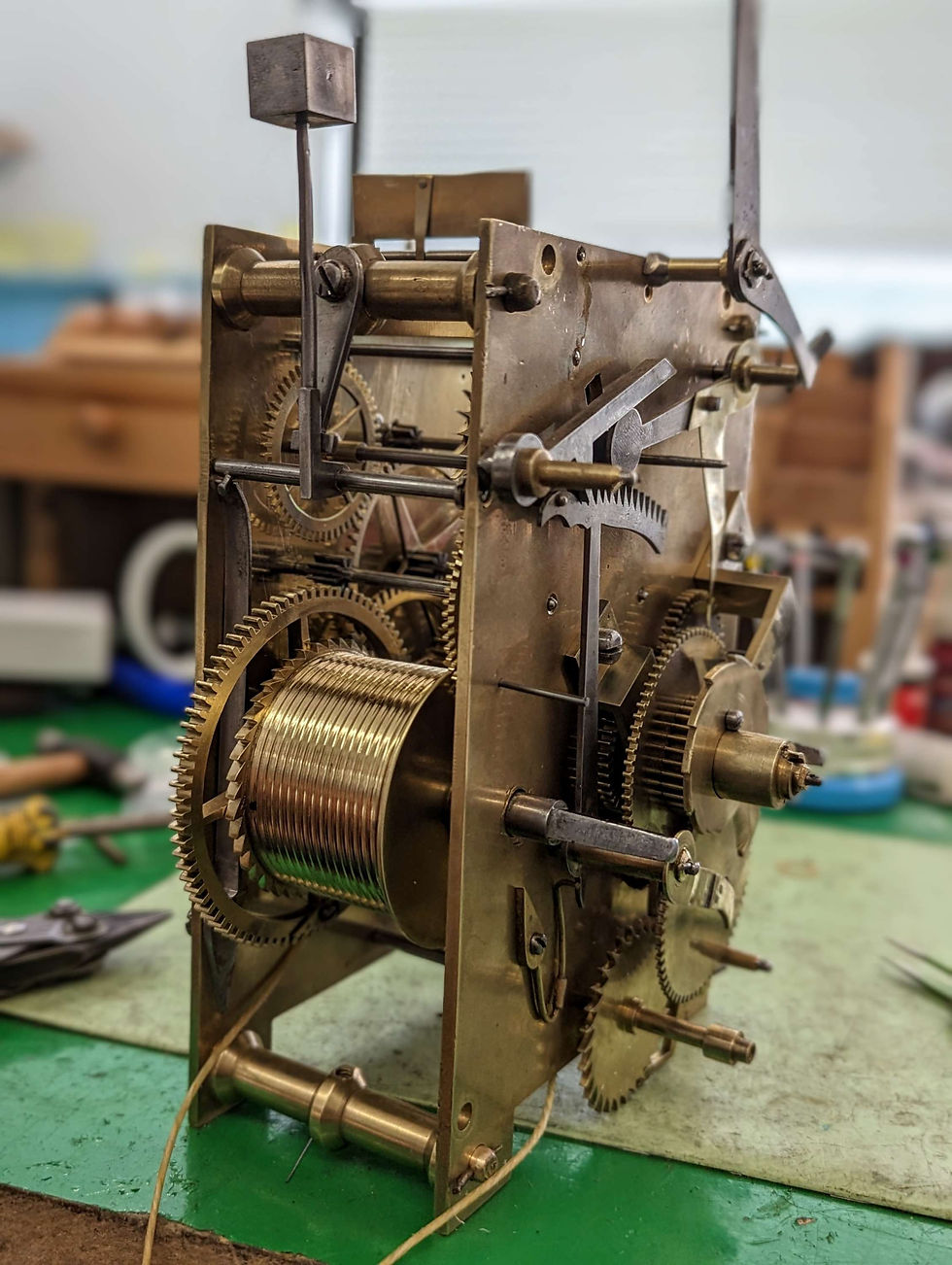Ansonia striking clock. Full service.
- Alan Wood

- May 18, 2023
- 2 min read

This American Ansonia striking clock was in need of a good service. The springs are exposed in this type and they were extremely gunged up with thick grease. Making the clock unsusable. However, it's been cleaned and serviced and working very nicely. I've also cleaned and waxed the case, and to be honest, it looks pretty good!

Ansonia Clock Company was one of the prominent clock manufacturers in the United States during the late 19th and early 20th centuries. The company was founded in 1851 in Ansonia, Connecticut by Anson G. Phelps and two partners, initially operating under the name "Phelps, Dodge & Co." They began their business by producing copper and brass products, including clock cases.
In 1854, the company underwent a significant change when they hired a skilled clockmaker named Jerome Manufacturing Company, which allowed them to expand their production capabilities. They changed their name to "Ansonia Brass and Copper Company" and began manufacturing brass movements for their clocks. By 1859, they had completely shifted their focus to clock manufacturing and changed their name to the "Ansonia Clock Company."
Ansonia Clock Company quickly gained popularity and recognition for producing high-quality and affordable clocks. They embraced technological advancements and employed innovative manufacturing techniques, allowing them to produce a wide range of clocks, including mantel clocks, wall clocks, and grandfather clocks.
During the late 19th century, Ansonia Clock Company became one of the largest clock manufacturers in the world. They were known for their beautiful designs, intricate detailing, and diverse styles, ranging from Victorian and Gothic to Art Nouveau and Art Deco. The company attracted skilled artisans, designers, and craftsmen, who contributed to the creation of exquisite timepieces.
In addition to their domestic success, Ansonia Clock Company expanded its operations internationally. They established subsidiaries in several European countries, including England, Germany, and France, to cater to the global demand for their clocks.
However, the company faced financial difficulties during the Great Depression in the 1930s. Despite their efforts to adapt and introduce new products like radios and phonographs, Ansonia Clock Company struggled to stay afloat. In 1931, they filed for bankruptcy and ceased their clock production. The company's assets were sold to various buyers, including Russia, where some of the manufacturing equipment was transported and used in the production of Soviet-era clocks.
Today, Ansonia clocks from the company's heyday are highly sought after by collectors and enthusiasts. They are admired for their craftsmanship, aesthetic appeal, and historical significance, serving as a testament to the rich legacy of the Ansonia Clock Company in the American clockmaking industry.





Comments